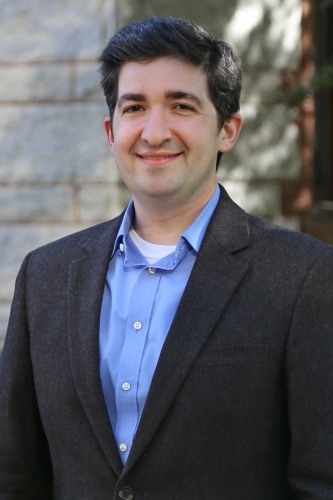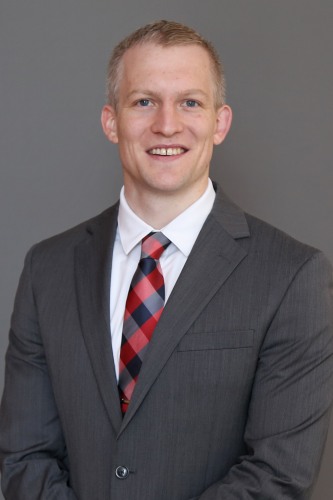Brown University School of Engineering alumnus Aneel Bhusri ’88 has established the Hazeltine Innovation Awards in Engineering, grants to underwrite early-stage faculty research projects with the potential to attract external funding and create a lasting broadbased impact. In the inaugural round of awards, the School disbursed more than $600,000 to eight projects.
The awards will be presented annually and aim to spur bold and innovative research that is transformative, impactful, and have the potential to significantly advance a field; to lead to creative and revolutionary approaches to STEM education and/or development of a diverse and inclusive workforce; or catalyze new knowledge and discoveries through purchasing or development of new instrumentation or equipment. The goal is to enable faculty and their student researchers in the most exciting and important areas of innovation and discovery.
The Hazeltine Innovation Awards are named after Engineering’s beloved professor emeritus Barrett Hazeltine, who joined the Brown faculty in 1959 and is best known for his classes in management and entrepreneurship that have helped to launch countless careers in business and nonprofit leadership. “ENGN9: Management of Industrial and Nonprofit Organizations,” which Hazeltine has taught for more than 40 years, remains one of the most popular courses at the University.
After a call for proposals, the following one-year projects were accepted for funding in this first year:

The project will integrate existing career resources, professional development centers (e.g., CareerLab), virtuous social-cognitive cycle to advance νSTEM participants’ preparation and self-efficacy for the workforce. STEMJazz faculty (a community of STEM underrepresented faculty members) will collaborate with νSTEM to provide participants individualized mentoring and research opportunities. Participants will learn to use their IDPs as an actionable preparation and development tool for their careers. The efficacy of the IDP-based, workforce-partnered curriculum will be evaluated by an external reviewer. Metrics that assess curricular performance (e.g., GPA, knowledge, skills, and abilities attainment) and social-emotional preparedness for innovation in the workforce will be used to determine the program effectiveness and scalability.
The broader scientific impact of this proposed work is two-fold: (i) broaden participation of diverse and workforce-ready scientists and engineers with advanced degrees (graduate students and postdoctoral researchers) and (ii) the validation a pedagogical, scalable, virtuous cycle curriculum that generates workforce-ready individuals. The capabilities and outcomes of pedagogical, scalable, virtuous cycle model and curriculum will serve as proof-of-concept for future collaborations with academic partners and funding opportunities for broadening opportunities in STEM.



Towards Electrochemical Detection and Imaging of Bacterial Infections (Principal Investigator Jacob Rosenstein with Anita Shukla and Jay Tang). This is the beginning of an interdisciplinary collaboration to develop new systems for continuous in situ imaging and treatment of bacterial infections. These systems will utilize a newly developed class of small electronic sensors that contain thousands of microelectrodes on a semiconductor chip, which can be used to create electrochemical ‘movies’ of cells, particles, and other materials near the sensor. These low-cost sensor chips have no optical components and no moving parts, and the proposed project could lead to new opportunities to detect, understand, and treat infections.

Development of a Novel Simulation Model and Tissue Phantom to Advance Equitable Photoplethysmography (PPG) (Principal Investigator Kimani Toussaint). Photoplethysmography (PPG), an optical technique where changes in light intensity reflected or transmitted through the skin are related to volumetric variations in blood circulation, is the basis of many noninvasive physiological sensing technologies. The technique is routinely utilized to estimate physiologically relevant measures such as heart-rate variability, arterial stiffness, and peripheral blood oxygen saturation (SpO2). However, it is its latter use in pulse oximetry to measure SpO2, for either clinical or at-home settings, that has drawn serious concerns. Many recent studies have shown that pulse oximeters overestimate SpO2 values in individuals with darker skin tones or appreciable amounts of melanin. Consequently, Black and Brown communities have been found to be close to three times more likely to suffer from silent hypoxia and thus not offered needed interventions. This devastating impact on people of color has been especially pernicious during the COVID-19 pandemic. It is for this reason that there has been urgency to develop an equitable pulse oximeter—one that works for everyone irrespective of skin tone. In developing a potential solution, we note that PPG assumes changes in measured optical intensity are due only to hemodynamic-induced absorption modulation in tissue. Moreover, this model assumes that the tissue environment is homogeneous and comprised of non-interacting dilute species, and that any variation in melanin-induced absorption effects can be sufficiently calibrated for in clinical studies. We propose that a more sophisticated approach to light-tissue interaction must be employed — one that exploits the polarization and spatial degrees-of-freedom of an optical field. The proposed one-year study will develop a full polarization model for light- tissue interactions specifically for PPG applications. A simulation model, based on polarization-sensitive Monte Carlo, will be enhanced by experiments on novel tissue phantoms that incorporate proxies for vascular structures synthesized by two-photon writing.



The Fluid Mechanics of Breastfeeding (Principal Investigator Monica Martinez Wilhelmus, with Jesse Ault and Roberto Zenit). Breast milk is considered the best source of infant nutrition. Its composition is customized to the gender and developmental stage of the child, providing a high bioavailability of essential minerals, easy nutrient absorption, and immunological benefits. However, important physical challenges, mainly pain, clogged ducts, and low milk flow, usually impede women from breastfeeding to the recommended duration of six months after birth. While important insight has been gathered from clinical research focusing on the properties of breastmilk and the biomechanics of breastfeeding, more emphasis should be given to analyzing the fluid mechanics involved in this process. In particular, the exact relationship between the viscosity of breast milk and local shear rates resulting from the pressure distribution in the mammary ducts as external forces are applied to the breast during breastfeeding is still unknown. As a result, breastfeeding techniques are based on empirical knowledge, and the design of extraction devices has no direct connection to the physics of breast milk expression. To alleviate these issues, we propose a bold and transformative study to implement cutting-edge experimental and numerical techniques to develop a mechanistic understanding of the fluid mechanics involved in breastfeeding. We will adopt a synergistic approach involving rheological measurements of transparent milk-mimicking fluids with different rheologies, velocimetry and flow visualization experiments using realistic 3D printed models of mammary ducts, and numerical simulations including fluid-structure interactions in deformable geometries. Our investigation is essential to finding innovative solutions and effectively addressing barriers for women to breastfeed without sacrificing their quality of life and potentially compromising the nutritional requirements of infants. We expect our findings to contribute to a comprehensive understanding of breast milk behavior during the extraction process, thereby transforming and significantly advancing this field while providing key insights to develop new and effective strategies for lactation.



The Flow of Cerebrospinal Fluid in the Glymphatic System (Principal Investigator Roberto Zenit with Mauro Rodriguez and Tom Powers). Recent studies have demonstrated that the flow of cerebrospinal fluid (CSF) is of significant importance in the clearance of metabolic waste in the brain. The CSF moves along the perivascular spaces and through the brain tissue transporting myloid-beta and tau proteins, among other metabolic waste, some of which are related to the onset of Alzheimer’s disease. However, and most importantly, the basic mechanisms of how this aqueous fluid moves around in the so-called glymphatic system are not fully understood. Recent in-vivo experiments suggest that the pumping of CSF is induced from arterial pulsations, but these findings remain controversial and are not fully accepted by the specialized community. Interestingly, few alternative explanations or hypotheses have been put forward. In this project we will use experiments, computer simulations and theoretical modeling to investigate the origins of CSF flow. We will build a phantom analog model with a concentric cylinder configuration aimed at mimicking the arterial-perivascular space driven by pulsations, designed using similarity principles. With the model, we will vary the pulsation frequency, the rigidity of walls, perivascular space size, the permeability of mock brain tissue with the aim to measure CFS flow rates and pressure gradients in the perivascular spaces. Computer simulations and theoretical models of the same system will complement and extend the experimental findings and parametric ranges widely. Our team is uniquely positioned to resolve the controversy of the origins of CSF flow in the brain due to our vast experience in fundamental fluid mechanics. This high-risk but potentially transformative project will jump start our efforts allowing us to obtain preliminary results which, as a consequence, will allow us to approach the specialized clinical community in this subject. One of our goals is to consolidate a multidisciplinary team that can be competitive in requesting funds from external funding agencies.

Development of a Low-Cost High-Speed Fluid Velocimeter (Principal Investigator Daniel Harris). The measurement of fluid velocity is fundamental to fluid mechanics and nearly all applications thereof. In many cases, relatively high-speed measurements (≳ 1 kHz) are required to characterize a turbulent or otherwise time-dependent flow. However, all existing commercial technologies that can achieve high temporal resolutions are prohibitively expensive for most use cases. Thus, a low-cost accessible alternative would have an enormous impact in the field. An inexpensive optical computer mouse uses a small image sensor and cross-correlation to compute displacements between frames at remarkably high rates. Coincidentally, this underlying working principle is identical to one of the most well-established velocimetry techniques: Particle Image Velocimetry (PIV). In the proposed work, we will adapt the low-cost and highly optimized optical mouse hardware to perform non-intrusive high-speed single-point fluid velocity measurements in the bulk of a flowing fluid. This objective will require adapting the known principles of PIV to the mouse sensor hardware and suitably designing customized optical and illumination components of the complete device. Furthermore, custom graphical software will be developed to perform measurements in real time. The device developed in the work will be benchmarked in a variety of known flows and in direct comparison to other state-of-the-art velocimetry methods. If the project is successful, the proposed work will make such measurements more broadly accessible to advance scientific discovery in the field of fluid mechanics while also having the potential to disrupt the industry.

Rodent Retina Imaging for Alzheimer's Disease Prediction (Principal Investigator Jonghwan Lee). Alzheimer’s Disease (AD) is a growing epidemic with significant financial implications. We aim to develop a novel biomarker for non-invasive, cost-effective regular checkups to predict AD onset by integrating retinal vascular imaging and artificial intelligence. We also aim to develop a new technology to restore vision in age-related macular degeneration (AMD), offering a 10,000 pixel solution without the need for implantation surgery. This will require equipment consisting of two parts: 2D funduscopy system (purchased with this fund) and optical coherence tomography (OCT) add-on (purchased by the PI’s existing fund).
Using the equipment, in aim one, we will perform near-lifespan longitudinal tracking of retinal microvascular morphology and topology in AD mice. We recently demonstrated that OCT allows for longitudinal imaging of brain microvascular changes in AD model mice. We identified 11 properties as promising biomarker candidates with significant degeneration in the AD model compared to normal aging. To propose a human clinical trial, we must demonstrate that these properties exhibit similar pathological trajectories in the retina. We will perform a one-year longitudinal study of retinal vasculature in AD mice and normal mice.
Aim two addresses the effective delivery of gold nanorods (AuNRs) to the retina and their long-term toxicity. In our latest study, we found that AuNRs can be intravitreally delivered to retinal neurons and we can effectively activate the neurons using a near-infrared laser. However, the most effective chemical conjugation of AuNRs for cell type-specific delivery and the potential long-term toxic effect on retinal neurons remain unknown. We will test these hypotheses by injecting Thy1-conjugated and MGluR-targeting AuNRs into mice and imaging the delivered AuNRs. We will also conduct a longitudinal study to measure retinal neuronal layer thicknesses over six months to assess potential toxic effects.
Both aims will general critical preliminary data for our two upcoming R01 renewal applications.

Markes International Summa Canister Sampling System (Principal Investigator Kurt Pennell). The widespread use of per- and polyfluoroalkyl substances (PFAS) in commercial products and fire-fighting foams has resulted in unprecedented contamination of the environment, impacting both soil, surface water and groundwater. In addition to contaminated drinking water, PFAS has been detected in agricultural crops and animals, including livestock and game species. These findings prompted the U.S. Environmental Protection Agency to establish a PFAS action plan in 2019, and in March of this year the EPA proposed drinking water standards for six PFAS, including perfluorooctane sulfonic acid (PFOS) and perfluorooctanoic acid (PFOA), each with maximum contaminant levels (MCLs) of 4.0 ng/L (parts per trillion). In addition to contamination of food and drinking water supplies, there is now growing evidence that emissions of PFAS to the atmosphere and subsequent air-borne transport have resulted in global PFAS contamination. Collecting and analyzing volatile and air-borne PFAS in air and effluent gas streams is particularly challenging. Although carbon or resin traps have been employed, this approach is not effective for shorter chain length PFAS. Thus, the objective of this proposal is to purchase a Markes International summa canister sampling system to automatically and accurately transfer gas samples onto a high-resolution GC-MS system for the analysis of volatile and semi-volatile PFAS. Air samples will be collected from three sources; indoor and outdoor (ambient) air monitoring, effluent gas streams from field-scale applications of thermal remediation, laboratory-scale flow-through reactor studies designed to elucidate the thermal destruction pathways. The proposal will result in the unique capability to accurately and efficiently monitor levels of short-chain length PFAS and reaction byproducts. Research projects using this instrument will engage undergraduate students, graduate students and postdoctoral fellows, and serve to advance our fundamental understanding of PFAS fate and transport in the environment.